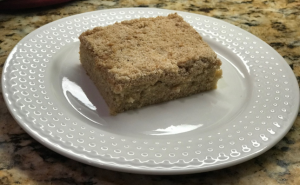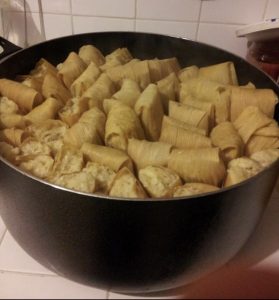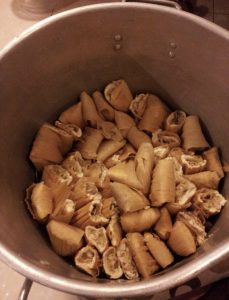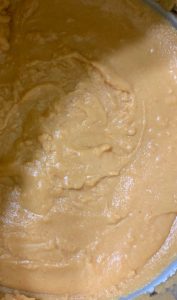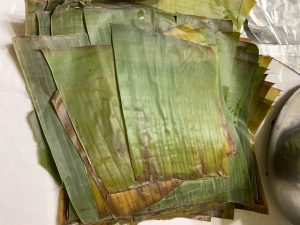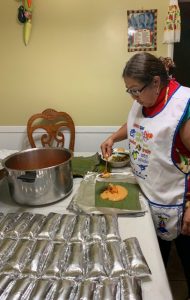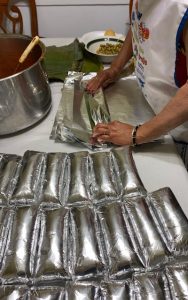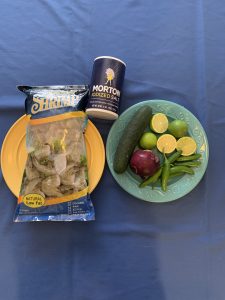As I sat at the table surrounded by family members, I stared at the bowl full of hot stew in front of me. I looked around and could see adult family members enjoying this soup that was new and strange for me. As a kid, I was convinced it was one of those foods that only adults enjoy. My mom encouraged me to try it and with a deep breath, I grabbed my spoon and filled tiny drops of this broth. It wasn’t enough to get the full taste so I took another sip, this time filling the spoon. Instantly and unexpectedly, this dish named pozole had just become my favorite.
The fact that it was a popular dish in our Mexican culture had me confused as to why it took seven years for my mother to introduce this dish to me. I even felt a little resentment that I was not told about it a lot sooner. From then on, I had pozole as many times I could with the belief that I would be making up for all the times I missed out on it. My mom then started making it on my birthdays and soon, it became a necessary tradition for me to celebrate each year. My most memorable birthday with pozole was when I turned 15. It was a rainy day in February during my freshman year in high school as I walked home from school cold and soaking wet. I tried my best not to allow the weather to literally “rain on my parade”. As I opened the front door to my house, my cousin stood in front of me holding pink and purple balloons as I heard my mom and friends yell, “Happy birthday!” The smell of pozole instantly filled my nose and convinced me my birthday was in fact, not ruined at all.
From then on, whenever the topic of pozole was brought up between me and my friends, I would argue that my mother’s pozole was the best and that no one could top hers. Of course, my friends felt the same about their mother’s pozole and would argue the same. To settle this debate once and for all, I would invite my friends over for pozole whenever my mom made it. My friends would always ask, “What’s the special occasion?” since pozole is usually known to be served during celebrations but at this point, my mom was making it “just because”.
Once, I attended a friend’s birthday party where pozole was served. People around me saw that I was hesitant to try it as I only trusted my mom’s pozole. They tried convincing me it was delicious. To my disappointment, it wasn’t as great as my mother’s but I held back from arguing to avoid being rude and so I politely agreed. Ever since I have not tried other people’s pozole except for my mother’s. There was an exception though when my boss had someone make all the employees pozole as a gesture of gratitude during the week of Christmas. As much as I hate to admit, that pozole was better than my mother’s that I did not bother telling anyone that this pozole was better. This pozole was different though: it was green as opposed to my mother’s whose dish was red because of the sauce she used. I was amazed that there were other kinds of pozole! This green version of my favorite dish instantly took me back to 1st grade when I had just finished reading Dr. Seuss’ “Green Eggs and Ham.” I had begged and convinced my mom to make me green eggs and ham at the time. Unfortunately, she can’t make me green pozole since she doesn’t know how to cook it.
Although pozole is a popular Mexican dish served on special occasions, people still enjoy it on any typical day. If you’re lucky enough, you may even have a Mexican restaurant nearby that serves pozole freshly made on weekends. Usually Sundays after church many Mexican families go out to eat it. Sundays also became the time of the week that my aunts, uncles, and cousins would go over my Abuelita’s house to enjoy a bowl. I would wake up to the smell of pozole as it filled the house with its scrumptious scent. The smell was the best thing to wake up to.
The table was covered and full of napkins, soda, bowls, cups, tostadas, condiments, and of course, loved ones. It always seemed that we did not have enough chairs for everyone because of how crowded it was with family members. So, when one person was done eating, he or she would offer their seat to someone who was standing. Usually, the kids would sit at the same table in order to allow the adults to sit together and chat away. Even little cousins who were picky eaters liked pozole and would always ask for seconds. Our neighbors from different races and ethnicities would enjoy it as well. Every time pozole was made, we would invite them over or send some their way.
As I got older, I realized soon my mom would not be able to cook pozole when she got as old as my grandmother who couldn’t cook pozole at her current age. I never learned to cook, not even my favorite dish. I was worried that my family’s recipe would be gone if I didn’t learn. So, at Christmas of 2019, I learned how to make my very first dish. It was easier than I thought but my mother made it difficult with her style of teaching. You see, most Mexican mothers do not use measurements when cooking. When explaining how to make something, they will always say to just “tanteale” which means to put however much of an ingredient you think is needed to cook the dish well. My mother explained to me that “you just feel it”. Since I never cooked in my 27 years of life, it was hard to sense when enough was enough but I managed to pull through. I was proud of myself for making a decent pozole that tasted very similar to my mom’s. I also felt relief knowing that I got the recipe down to pass down to our family’s future generations.
The History of Pozole (Warning: Not for the Weak Hearted)
The only thing I knew about pozole was its delicious taste, but I learned that there is more to it than just that. The term pozole comes from Nahuatl words such as pozole, pozolli or pasole. These words mean foam and it refers to the foam that is made when cooking pozole. In pre-colonial times, Aztecs were one of the many indigenous people of Mesoamerica that cooked pozole. Just like today, the Aztecs cooked pozole to celebrate special occasions such as a celebration for their god, Xipe Totec, who is said to have fed his first people with his own flesh. Because of this, Aztecs included a very unique ingredient in their pozole: human meat! Prisoners and slaves were sacrificed to obtain their flesh. When Spanish conquistadores arrived, they did not allow the practice of their cannibalistic rituals, so the Aztecs started substituting their human meat for pork or Xoloitzcuintles meat, a famous Mexican dog (sounds a little bit better than human meat, right?). Ok, but let’s not let these historic details keep us from enjoying a bowl of my mom’s pozole. Below is her recipe, human-meat free (insert sigh of relief here).
Ingredients
Go to your nearest grocery store and get:
- 1 can of white hominy
- 2 lbs. of pork neck bone
- 2 lbs. of pork shoulder chunks
- 15 California chili pods
- 1 head of garlic
- 2 large onion
- Salt
- Radish
- Lemons
- Bag of tostadas
Chili Sauce
First, you’ll need to make the chili sauce. My mom likes to make red pozole so this red sauce will help do just that. Devein the California chili pods. You can do this by using a knife to cut down the middle and scoop out the seeds using a spoon. Next, you’ll want to rinse the chili pods and soak them in hot water. Make sure to use enough water to cover all chili pods. Once they become soft, blend the chili pods in a blender with the garlic and 1 chopped onion.
Pozole
Fill a pot with 1/3 of water and bring water to a boil. While you’re waiting for the water to boil, rinse all of the pork meat and hominy. Add chili sauce, meat, and hominy once the water is ready. Don’t forget to add salt, (“tanteale”) and put as much salt as you’d like to achieve your desired flavor. Leave the stove on High and cook for 2-3 hours. Cut radish, cabbage, onion, and lemons and add to your bowl of pozole. Top off pieces of tostada with pozole if desired. Enjoy the smell of pozole as it fills your home.
Prepare to join the debate of who’s pozole is better.
References:
Berkman, J. (n.d.). What Is Pozole? How to Make Delicious Mexican Corn Soup. Retrieved from https://blog.prepscholar.com/pozole-recipes
Cocking, L. (2017, February 28). A Brief History of Pozole, Mexico’s Take on Traditional Stew. Retrieved from https://theculturetrip.com/north-america/mexico/articles/a-brief-history-of-pozole-mexicos-take-on-traditional-stew/
Lopez-McHugh, N. (2012, May 21). Mexico On My Plate: Red Pozole and Its History. Retrieved from https://honestcooking.com/mexico-on-my-plate-red-pozole-and-its-history/
Mazatlan Post. (2018, July 17). Dark origin of pozole an emblematic Mexican dish. Retrieved from https://themazatlanpost.com/2018/07/16/dark-origin-of-pozole-a-emblematic-mexican-dish/
The sacred, religious, and cannibalistic origins of pozole. (2019, September 9). Retrieved from https://www.eluniversal.com.mx/english/sacred-religious-and-cannibalistic-origins-pozole

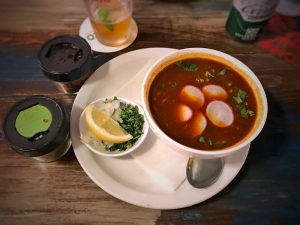
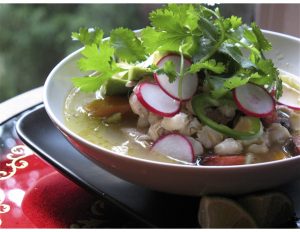
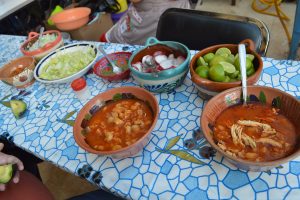



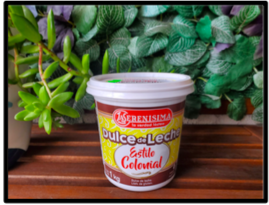 The most important ingredient of the Chocotorta is the dulce de leche. Without this ingredient, you are unable to have a proper Chocotorta. My preferred brand of dulce de leche is La Serenisima. I was able to locate this item from an Argentine market located in the City of Redondo Beach.
The most important ingredient of the Chocotorta is the dulce de leche. Without this ingredient, you are unable to have a proper Chocotorta. My preferred brand of dulce de leche is La Serenisima. I was able to locate this item from an Argentine market located in the City of Redondo Beach. The original recipe called for Mendicrim. Mendicrim is a type of cream cheese that was made by The Mendizabal Company. Mendizabal is no longer in operation. The original recipe was purchased by the SanCor Company. Sancor currently sells a similar version of the product.
The original recipe called for Mendicrim. Mendicrim is a type of cream cheese that was made by The Mendizabal Company. Mendizabal is no longer in operation. The original recipe was purchased by the SanCor Company. Sancor currently sells a similar version of the product.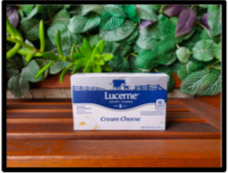 For my recipe, I was unable to obtain Mendidrin, so I utilized the Lucerne brand of cream cheese. The Lucerne cream cheese worked very well with the La Serenisima dulce de leche. I was able to locate this item at an Argentine market located in the City of Redondo Beach.
For my recipe, I was unable to obtain Mendidrin, so I utilized the Lucerne brand of cream cheese. The Lucerne cream cheese worked very well with the La Serenisima dulce de leche. I was able to locate this item at an Argentine market located in the City of Redondo Beach.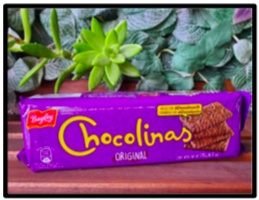 Chocolinas are simple chocolate cookies from Argentina. The cookies are not very great on their own. The cookies are chalky, dry, and leave crumbs everywhere; however, they are the perfect cookie for this recipe. I was able to locate this item at an Argentine market located in the City of Redondo Beach.
Chocolinas are simple chocolate cookies from Argentina. The cookies are not very great on their own. The cookies are chalky, dry, and leave crumbs everywhere; however, they are the perfect cookie for this recipe. I was able to locate this item at an Argentine market located in the City of Redondo Beach.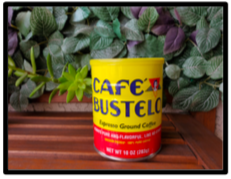 Coffee is also another very important part of this recipe. It helps balance out the sweetness of the dulce de leche. The coffee is utilized to moisten the Chocolinas before layering them into the pan. You also use the coffee grounds in between the layers of the Chocotorta. You are able to purchase this coffee at most supermarkets.
Coffee is also another very important part of this recipe. It helps balance out the sweetness of the dulce de leche. The coffee is utilized to moisten the Chocolinas before layering them into the pan. You also use the coffee grounds in between the layers of the Chocotorta. You are able to purchase this coffee at most supermarkets.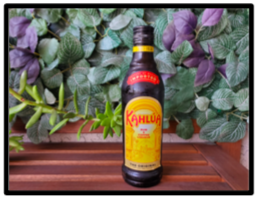 The original recipe did not include Kahlua; however, mine does. The Kahlua gives it an extra something. It makes the cake taste extra delicious. This item is available at most supermarkets.
The original recipe did not include Kahlua; however, mine does. The Kahlua gives it an extra something. It makes the cake taste extra delicious. This item is available at most supermarkets.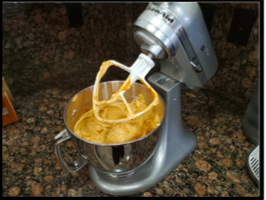

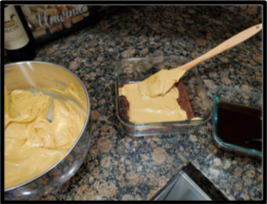
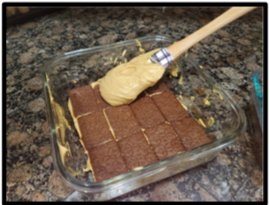
 Thinking of my first connection to banana nut bread takes me back to high school where I took
Thinking of my first connection to banana nut bread takes me back to high school where I took 





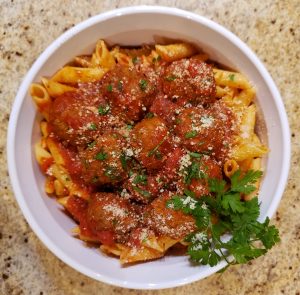
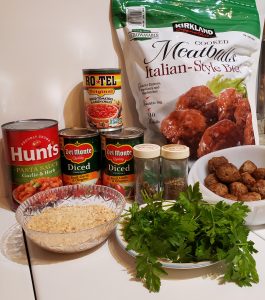

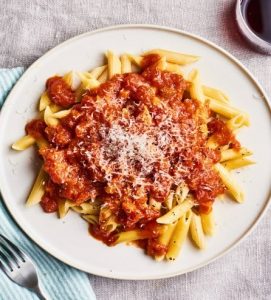


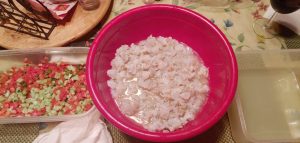
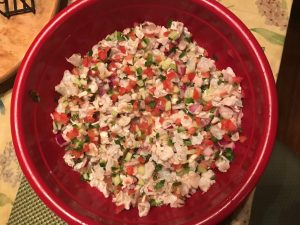
 Having a tree that produced something edible and so readily available for me was exciting and I felt like the luckiest little girl in the world! I remember using a long orange fruit tree picker to bring down the avocados which were my absolute favorite thing to do so that we could give them away. We were fortunate to have more than enough. I felt like I was doing hard work and a very important job at the time. We were saving people money, trips to the store, time, and maybe even their health as avocados provide good nutrition. Our tree would produce so many avocados that we would fill countless buckets of them. We had so many that we would give them out to anyone and everyone. People that walked by would ask us if they could get some and we would say, “Yes! Please take as many as you’d like!” and whenever we had guests, we made sure they’d go home with a bag full of avocados. Once, we even had a city inspector make a deal with us that if we gave him a bucket of avocados, he’d write off our citation ticket for having something in our backyard that needed a permit (I forgot what it was exactly).
Having a tree that produced something edible and so readily available for me was exciting and I felt like the luckiest little girl in the world! I remember using a long orange fruit tree picker to bring down the avocados which were my absolute favorite thing to do so that we could give them away. We were fortunate to have more than enough. I felt like I was doing hard work and a very important job at the time. We were saving people money, trips to the store, time, and maybe even their health as avocados provide good nutrition. Our tree would produce so many avocados that we would fill countless buckets of them. We had so many that we would give them out to anyone and everyone. People that walked by would ask us if they could get some and we would say, “Yes! Please take as many as you’d like!” and whenever we had guests, we made sure they’d go home with a bag full of avocados. Once, we even had a city inspector make a deal with us that if we gave him a bucket of avocados, he’d write off our citation ticket for having something in our backyard that needed a permit (I forgot what it was exactly). Since we no longer had a tree that gave us free avocados, I had to start buying them which to me was so hard to process. I had been getting avocados for free for 20 something years and now I’m paying extra for “guac” at chipotle! It felt unethical to me almost as if the air was being sold to me. Then I’d go to grocery stores and find avocados that were not even half the size of my softball avocados. I would think, “You call this an avocado?!” To make matters worse, avocados seem to always be overpriced. It’s still something that I’m struggling to accept but I love avocados and so I make the investment and buy them.
Since we no longer had a tree that gave us free avocados, I had to start buying them which to me was so hard to process. I had been getting avocados for free for 20 something years and now I’m paying extra for “guac” at chipotle! It felt unethical to me almost as if the air was being sold to me. Then I’d go to grocery stores and find avocados that were not even half the size of my softball avocados. I would think, “You call this an avocado?!” To make matters worse, avocados seem to always be overpriced. It’s still something that I’m struggling to accept but I love avocados and so I make the investment and buy them.
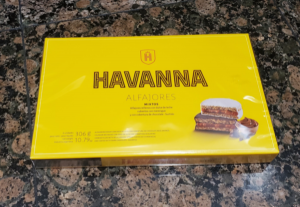 There are many well-known alfajor brands in South America. My personal favorite alfajor brand is Havanna. The brand Havanna was founded in 1948 by Benjamín Sisterna, Demetrio Elíades and Luis Sbaraglini in the city of Mar del Plata (a coastal city in Argentina).
There are many well-known alfajor brands in South America. My personal favorite alfajor brand is Havanna. The brand Havanna was founded in 1948 by Benjamín Sisterna, Demetrio Elíades and Luis Sbaraglini in the city of Mar del Plata (a coastal city in Argentina).






